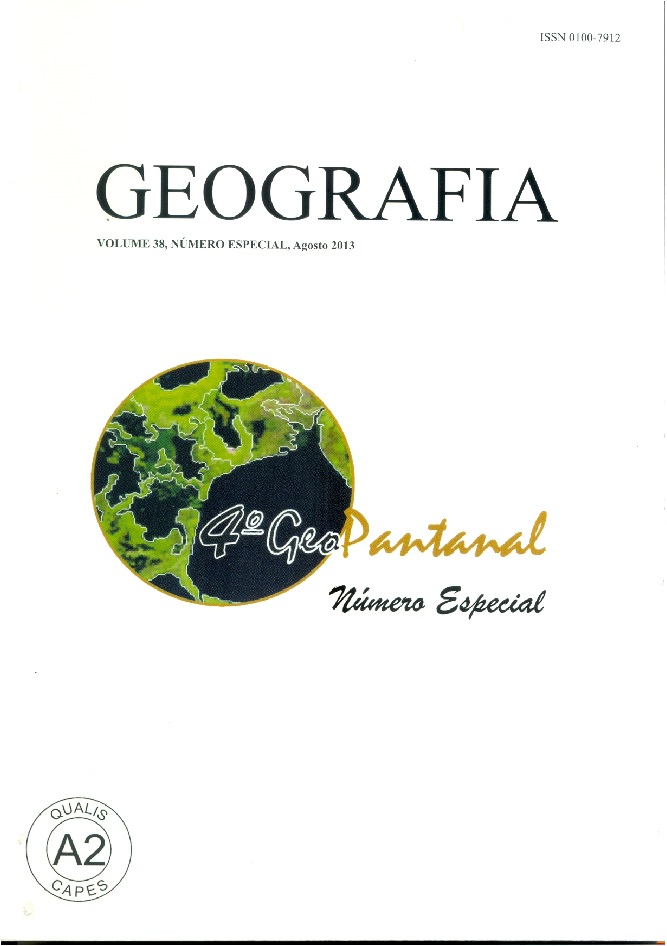SUPERVISED CLASSIFICATION APPLIED TO VEGETATION MAPPING IN THE BARÃO DE MELGAÇO MUNICIPALITY (MATO GROSSO STATE, BRAZIL), USING MODIS IMAGERY
Abstract
The use of remote sensing images and geoprocessing techniques has contributed to a fast and effective monitoring of the Pantanal region. Barão de Melgaço municipality, in Mato Grosso State, has 99.2% of its land area inserted in this biome, with flooding dynamics which result in rapid changes in vegetation cover. Accordingly, this study aimed to map the vegetation of this municipality, in both dry and rainy seasons, using supervised classification (Parallelepiped and SVM) of images from MODIS sensor. The classifications were applied, for each date, both on composite R(MIR) G(NIR) B(RED) and on composite with the fraction images R(wet soil) G(vegetation) B(water) for the rainy season, and R(dry soil) G(vegetation) B(water) for the dry season. The fraction images were derived from a Linear Spectral Mixture Model. A total of eight maps were created and evaluated using an error matrix. The best result for each season was the Parallelepiped classifier applied to the composition with the original bands from MODIS. These results were compared with the map of phyto-ecological regions of Barão de Melgaço. They allowed concluding that the presence of soil in Savanna Woodland and in Tree and/or Shrub Savanna prevented the classification of these vegetation types in the images of the dry seasonDownloads
Published
Issue
Section
License
The authors maintain the copyright and grant GEOGRAFIA the right of first publication, with the articles simultaneously licensed under the Creative Commons BY 4.0 License, which allows sharing and adapting the articles for any purpose, as long as appropriate credits and provisions of image rights, privacy or moral rights. Other legal attributions can be accessed at: https://creativecommons.org/licenses/by/4.0/legalcode.en.
Geography, Rio Claro, SP, Brazil - eISSN 1983-8700 is licensed under the Creative Commons BY 4.0 License.





